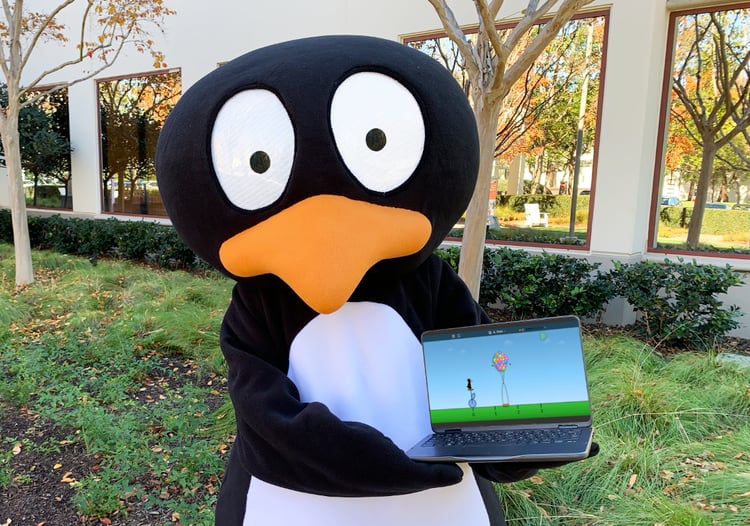
The recent school closures due to COVID-19 mean that most students will not be returning to the classroom for several months. This situation has sparked a lot of conversation across the education landscape about how student learning will be impacted.

At MIND, we know that school closures are exacerbating the existing problems with both traditional math education, and with society’s relationship with math. These are not new challenges, and they are issues we have been working to address for more than 20 years. The light being shined on them because of the COVID-19 situation is providing an opportunity to deepen understanding of, and find new ways to address, these existing issues.
There are a lot of unanswered questions, but also some great reference points to help guide us as we develop answers together.
As we think about ways to facilitate learning experiences for students at home, we can't do it in a vacuum. School closures are one part of the multiple effects COVID-19 is having on families and communities across the country. The health-related and economic impacts of the current situation means that for many families, basic needs are the priority right now. So as we provide information and resources to help address the academic challenges of the moment, we must never lose sight of the bigger picture. And as we think about learning, now more than ever the social and emotional challenges students are facing are going to profoundly impact learning now, and in the longer term.
The Collaborative for Academic, Social, and Emotional Learning (CASEL) has put together some great resources around COVID-19, which you can find at casel.org/resources-covid. These resources include everything from guidance on how to talk with children about COVID-19, to using trauma-informed practices to support students.
With that larger context in mind, let’s look at the current academic challenges, and how we are working to help schools, teachers, families and students.
Research-based nonprofit NWEA just published a research brief on the potential effects of school closures on academic growth. The study looked at data for over five million students in grades 3 through 8 who had taken NWEA’s MAP Growth assessments in 2017-2018. Leveraging data about summer learning loss, the researchers projected how COVID-19-related school closures could impact students across the country.
The study looked at two scenarios:
Both scenarios suggested that the extended school closures will have a dramatic impact on student learning, and it will be especially negative with regard to mathematics. According to the report, students could return to school in the fall “with less than 50% of the learning gains and in some grades, nearly a full year behind what we would observe in normal conditions.”
A second paper published in early May through the Annenberg Institute at Brown University built on the NWEA research brief, and dove even deeper into potential impacts of the COVID-19 school closures. This paper projected that students will return to school next year with “more variability in their academic skills,” and that “educators may need to consider ways to further differentiate instruction or provide opportunities for individualized learning.”
There is a lot of debate about summer learning loss, though. Some believe the idea of a “summer slide” is overly exaggerated, and could look at the “COVID Slide” projections with skepticism.
Last year, researcher Paul von Hippel wrote an article for EducationNext, in which he questioned classic research on summer learning loss, stating that “Results from older tests can’t be replicated on modern tests, and modern tests don’t necessarily agree with each other.”
In early April, von Hippel wrote a new article on Education Next titled, “How Will the Coronavirus Affect Children’s Learning? Unequally.” He looked to former instances of extended school closures due to a variety of reasons, including natural disasters. Among his predictions were that most children would be behind academically when they return to school in the fall, and that many more children would need to repeat a grade. He also stated that “If families differ in their ability to support their children’s learning, especially during an economic crisis, this is when we’re going to see it.”
No matter what side of the summer learning loss discussion you are on, there is common ground when it comes to the projected impact of extended school closures: there will be setbacks, underserved students will be disproportionately affected, more students will be behind overall when school resumes, and the spread of individual needs in the classroom will be greater.
Over the past several years, progress has been made with regard to the “digital divide,” the gap between students who have access to technology and those who do not. But while many schools themselves have provided increased access to technology and better internet connectivity, many students do not have that same access at home. Districts across the country are struggling with this issue now as they try to implement remote learning.
And access by itself is not enough. The kind of learning experiences that students are having with technology varies widely. The Department of Education’s Office of Educational Technology defined the digital use divide as separating “students who use technology in ways that transform their learning from those who use the tools to complete the same activities but now with an electronic device (e.g., digital worksheets, online multiple-choice tests).” Multiple studies and reports have provided evidence of the digital use divide between underprivileged students in poorer districts, and students in more affluent ones.
School closures have meant a step backward when it comes to the digital divides. For underserved students and rural communities, the impact is even greater. This is another reason why facilitating learning during the COVID-19 situation is not a one-solution problem.
Why are the projected learning losses greater for math than for reading? Based on our work and experience, we can point to some clear reasons.
A primary one is the “experience gap”— a dissonance between the rich mathematical experiences students should have, and the ones they actually have. Math is very often taught in a way that focuses on calculations and rote memorization. As a result, many students have a poor relationship with math, as they have only experienced it in a very limited way. All students have the ability to think deeply about mathematical concepts. But when math is presented only as words and numbers on a page, students often fail to develop deep conceptual understanding.
These limited and non-engaging interactions with math not only contribute to poor proficiency levels, but also to a dislike, and even fear, of math. Many parents and family members also developed a negative relationship with math, and those same parents and family members are now being asked to lead their students’ math learning at home. And we know that math anxiety on the part of parents and family members has a negative impact on children.

It sounds pretty bad, right? There are a lot of problems math education had on a good day, and most of them are being made worse by the extended school closures we’re facing now.
Let’s take a deep breath—together.
Now, let’s take a step forward—together.
We are in this for the long haul. There is no one solution to the math crisis, and it will not be solved overnight. While the COVID-19 situation is increasing challenges in many ways, there are also opportunities for engaging and exciting math experiences that can help students and families develop a more positive relationship with math. Learning can be even more personalized for students, and offer experiences the classroom cannot provide.
If we are going to address the current challenges and solve the larger math education problem, we need to support the entire learning ecosystem. That’s why MIND’s efforts go beyond classroom solutions, into home and community as well. Our goal right now is to provide a variety of resources for schools, teachers and families during these school closures, and make them as accessible as possible.
We have made our ST Math program free to access for schools and families through June 30th, 2020. Schools and districts who are currently using ST Math can add additional grades and schools. ST Math students will be able to access the program from home. And families whose children do not currently use ST Math can get the homeschool version of the program. You can find out more and access the version of the program that fits your needs at stmath.com/coronavirus.
In addition to getting access to the program, you are also getting access to the support and resources around ST Math. We have created a series of webinars and video resources to help you get started with the program, and help your students can get the most out of it. Our Education Success team is here to support you with everything from answers to your technical questions, to guidance around best practices and implementation.
We will also be releasing resource guides for learning at home in the coming weeks. There will be versions for both families and teachers, covering multiple grades. They are downloadable, can be printed, and could also be distributed by schools and organizations that are already providing food and other essentials at pick-up stations in communities across the country.
We recently launched “Developing Our MathMINDs,” a series of conversations and resources about math that is intended to be a journey of growth with families over several weeks. Each week, MIND's Lead Mathematician and Product Director Brandon Smith and Content Development Manager Nina Wu will be talking about the adjustments families are making to learning at home, and the opportunities this situation provides for changing our relationship with math.
.gif?width=750&name=developming-mathminds%20(1).gif)
Both the guides and the Developing Our MathMINDs series will feature ST Math-related resources, as well additional program-agnostic math activities and resources designed for home-based learning.
We already had a thriving teacher community on Facebook, and have recently created a new group for families as well. If you are new to ST Math, we invite you to join the groups and the conversation with other learning leaders.
In addition to supporting MIND in making ST Math free to access, there is so much more amazing work being done by our partners to help schools, families and communities during this time.
Our partner Cisco has not only enabled our organization to shift to remote work effectively, but they are helping schools and families do the same. On top of offering free usage of their Webex platform, Cisco has created resources for educators and families to help facilitate remote learning. They also continue to work with MINDs to find more ways to support students during this time.
Rockwell Automation continues to be an amazing STEM resource for schools and families. They partnered with MIND and Boys & Girls Clubs to give MathMINDs Games to families in the Milwaukee area, and Rockwell’s Global STEM Ambassador Jay Flores is using social media to get families creatively engaged in STEM-related activities at home.
Fun #athome activity to guide your child through addition and subtraction in a way that connects to their passions and includes a lot more fun than traditional #math homework. #homeschool https://t.co/owwrTuDsS7
— Jay Flores (@JayFlores2032) April 23, 2020
As of early April, John Deere has been producing protective face shields for medical personnel, and has started an employee donation matching program, where they match food bank donations at a 2:1 ratio. They’ve also launched a COVID-19 Innovations site to provide free resources for everything from 3D printable designs to social distancing resources around identifying high traffic areas in the workplace.
The One8 Foundation continues to be a wonderful partner for MIND as well. They have provided tremendous support in bringing ST Math to more students, and in helping MIND strategically address both short and long-term challenges. Their MassSTEM Hub program has been coordinating support efforts with STEM educators in Massachusetts and also helping equip them with materials to 3D print face shields for medical personnel.
Phillips 66 has donated $3 million toward the fight against COVID-19, with a focus on front-line organizations. The funds are going to support first responders, food banks, health care providers, and more organizations serving the most vulnerable populations.
Verizon has directed their support efforts to healthcare workers, as well as supporting students’ ability to learn from home during school closures. Through their Verizon Innovative Learning Program, the program has tripled the data allowances for students as of March 16.
Our friend James Tanton, co-founder of the Global Math Project, is using social media to provide engaging math challenges and activities in his continued mission to highlight how joyful math can be.
There are many more stories like this from our partners and friends across the country. MIND is so proud to stand alongside all of them in supporting schools, families and communities during this situation. Their efforts truly support the entire student ecosystem.
As stated earlier, when students return to school, more of them will be behind. Those who were already behind could have fallen further back. Students' needs will be more varied, and they will need more support than ever before. And we are here to empower students, teachers, administrators and families with an all-new version of ST Math for the 2020-21 school year.
The core of our award-winning visual instructional program is as strong as ever in the new ST Math, and we've added exciting and innovative features to make it even more effective, flexible and easier to weave into any curriculum. The newest version of ST Math is responsive, works on the latest browser technologies (no more Flash!), and runs seamlessly across devices. Designed to deepen and extend engagement to maximize learning time, the update gives ST Math’s beloved mascot, JiJi, and all the puzzles and environments a fresh new look too.

You can learn more about what’s new in ST Math for 2020-21 at stmath.com/whats-new.
This redesign of ST Math has been in progress for years. In the past two years alone, the ST Math team has spent over 800 user experience research hours interviewing, observing, and conducting usability studies with over 935 teachers, administrators, and thousands of students. With each iteration of new prototypes, we've conducted internal and external usability studies, and have a network of schools—our Innovation Team—that have been using the new program during this school year, helping us make continuous improvements as we get ready for its official launch.
We know ST Math can make a significant positive impact for students, no matter where they are at when they start the school year. ST Math is mastery based and standards aligned, offering equitable access to learning through challenging puzzles, non-routine problem solving, and informative feedback. ST Math meets WWC quasi-experiment and ESSA Tier 2 requirements, and the program's unique, patented approach delivers robust results on a national scale. You can learn more about the efficacy portfolio of ST Math on our blog, and at stmath.com/impact.
We will be working with all of our ST Math schools to help them transition back to the classroom, and provide continued support to help students succeed in math at grade level. And we look forward to welcoming new schools, districts, students, and families into the ST Math Community.
Whether you are a family member, a teacher or an administrator, we are here to work with you and help your students through this challenging time. If you are using ST Math and the other resources we have made available, we want to hear from you. What’s working, what isn’t, and what you need for support. For ST Math-related help questions, you can reach out to support@mindresearch.org. Regarding our other resources, you can reach us at info@mindresearch.org, or through the community groups linked above.
If you would like to support MIND’s efforts and help us reach more students, you can make a donation here. Any level of support is greatly appreciated.
Remember—you are not alone. We are so grateful for your efforts to keep students engaged and learning during this unprecedented situation. Together we will support and empower our students.
ST Math Free Access
Developing Our MathMINDs
ST Math Webinars

Brian LeTendre was the Director of Impact Advancement at MIND Research Institute. In addition to building thought leadership and brand awareness for MIND, Brian worked cross-functionally internally and externally to amplify MIND's social impact and accelerate our mission. He is an author, podcaster and avid gamer.
Comment